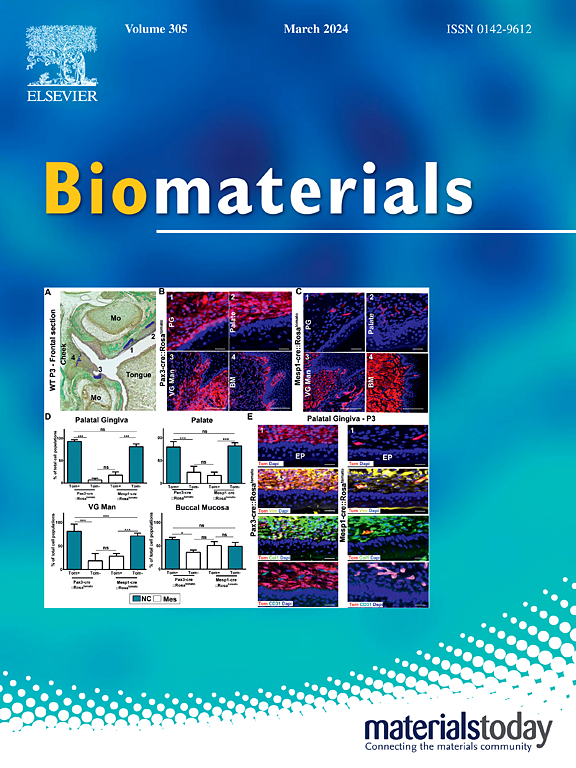Recombinant humanized collagen ameliorates ischemic myopathy through limiting natural IgM-mediated lectin complement activation
IF 12.8
1区 医学
Q1 ENGINEERING, BIOMEDICAL
引用次数: 0
Abstract
Despite technological advances in endovascular procedures, therapeutics that provide supportive microenvironments to repair ischemic muscles are limited for the treatment of advanced lower extremity peripheral artery disease (PAD). Here, based on the two major extracellular matrix components in skeletal muscle, the efficacies of recombinant humanized collagen type I and III (rhCol I and rhCol III) in regenerating tibialis anterior muscle after hindlimb ischemia were studied. Repeated intramuscular injections of rhCol I or rhCol III preserved myofiber structure and accelerated myofiber regeneration within one-week after injury. Proteomic signature demonstrated a reduced lectin complement activation in the rhCol I- and III-treated muscles. We identified a competitive binding between rhCol and natural IgM (nIgM), which inhibits nIgM-mediated lectin complement activation, as the underlying mechanism contributing to a protective microenvironment after ischemic injury. Furthermore, the complement-inhibiting rhCol I and rhCol III treatments exhibit long-term protection for ischemic muscle with ameliorated muscle pathology and improved muscle function. Our findings provide a promising biomaterial-based approach for treating ischemic myopathy induced by PAD.
求助全文
约1分钟内获得全文
求助全文
来源期刊

Biomaterials
工程技术-材料科学:生物材料
CiteScore
26.00
自引率
2.90%
发文量
565
审稿时长
46 days
期刊介绍:
Biomaterials is an international journal covering the science and clinical application of biomaterials. A biomaterial is now defined as a substance that has been engineered to take a form which, alone or as part of a complex system, is used to direct, by control of interactions with components of living systems, the course of any therapeutic or diagnostic procedure. It is the aim of the journal to provide a peer-reviewed forum for the publication of original papers and authoritative review and opinion papers dealing with the most important issues facing the use of biomaterials in clinical practice. The scope of the journal covers the wide range of physical, biological and chemical sciences that underpin the design of biomaterials and the clinical disciplines in which they are used. These sciences include polymer synthesis and characterization, drug and gene vector design, the biology of the host response, immunology and toxicology and self assembly at the nanoscale. Clinical applications include the therapies of medical technology and regenerative medicine in all clinical disciplines, and diagnostic systems that reply on innovative contrast and sensing agents. The journal is relevant to areas such as cancer diagnosis and therapy, implantable devices, drug delivery systems, gene vectors, bionanotechnology and tissue engineering.
 求助内容:
求助内容: 应助结果提醒方式:
应助结果提醒方式:


